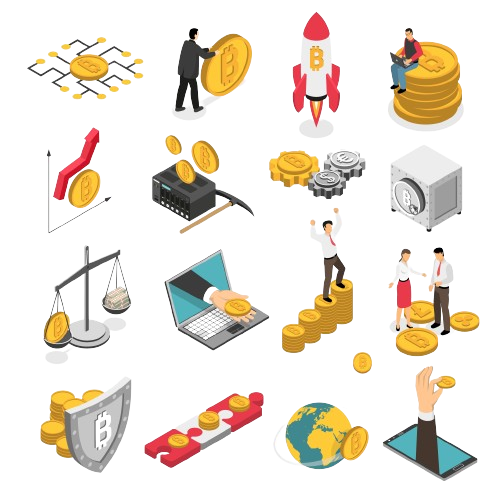
One of the most pivotal tools in the Bitcoin ecosystem is the cryptocurrency wallet used to store, send and receive BTC. Since Bitcoin’s launch in 2009, wallet technology has evolved dramatically from complicated desktop applications to simplified mobile apps. But looking ahead, wallets in decades to come may bear little resemblance to current offerings thanks to continuous advances in digital currency and blockchain technology.
This guide will explore projections for the future of Bitcoin wallets in the year 2050 and beyond. We will examine how cutting-edge innovations like hardware integration, AI security, tokenized asset features, biometrics, and brain-computer interfaces may reshape wallets. While predictions are speculative, gazing into the future provides perspective on Bitcoin’s long-term disruptive potential across finance and technology realms. The coming decades promise a new paradigm far beyond just basic cryptocurrency transactions.
Embedded Wallet Hardware and Deep OS Integration
By 2050, dedicated external hardware wallets as we know them today may be obsolete, replaced by ubiquitous wallet functionalities embedded across devices and operating systems. Cryptocurrency support will be system-level, and accessible via fingerprint scans or facial recognition on smartphones, computers, watches, vehicles, and IoT networks. Wallets will manage digital asset interactions seamlessly in the background of daily life.
Device-level integrations will provide turnkey user onboarding to cryptocurrency networks without needing specialized equipment. Wallets may also utilize biometric data for advanced multifactor authentication safeguarding access. Deep integration via OS APIs will enable wallets across applications and interfaces for frictionless asset management.
AI Cybersecurity and Fraud Prevention

As cryptocurrency use grows, wallet security will increasingly rely on artificial intelligence algorithms to outpace sophisticated threats. Wallets in 2050 will run robust local learning systems to autonomously detect suspicious activity and transactions.
Advanced pattern recognition of fraudulent patterns will trigger warnings or freeze assets when threats are identified. AI agents will run periodic security audits and simulate hacking scenarios on wallets to identify vulnerabilities. Machine learning applied to wallet security will provide multilayered adaptive protection from emerging attacks.
Tokenized Assets and Identity Unification
Wallets of the future may evolve into centralized hubs for managing various tokenized assets beyond just Bitcoin. Cryptographic tokens representing securities, commodities, intellectual property, and other digital or real-world value may be issued on blockchain networks and controlled through expanded wallet interfaces.
Interoperable protocols will allow seamless exchange between assets within integrated wallet platforms. Consistent identity credentials registered on the blockchain will enable custodial oversight of diverse holdings under a single wallet instance. These features will streamline converting and transferring different forms of tokenized value with ease.
Decentralized Finance and DApp Integration

Sophisticated wallet platforms in the coming decades may incorporate decentralized finance services and DApp connectivity. Wallets may leverage DeFi protocols for crypto-collateralized lending, borrowing, earning interest, and other automated smart contract interactions.
Native integrations with decentralized exchanges will facilitate trading and swapping assets. Wallets could also provide nodes on payment/state channels like Bitcoin’s Lightning Network for off-chain transactions. Interoperability will unlock a decentralized finance ecosystem from the convenience of one’s equipped wallet.
Brain-Computer Interface Commands
Cutting-edge brain-computer interface (BCI) technology being pioneered by companies like Neuralink may eventually give rise to thought-controlled wallets. Embedded neurological sensors could interpret brain signals correlated to commands like sending payments or trading crypto. Intuitive wallets may respond to silent mental directives for frictionless, speedy interactions.
While still largely theoretical, latent access via neural commands could offer advanced convenience and security. Users simply think of transactions to execute them securely, eliminating manual components vulnerable to hacking. Wallets may even integrate with augmented reality interfaces for managing visualized assets via intentional thinking.
The Next Wallet Frontier
By 2050 cryptocurrency wallets will bear little resemblance to today’s counterparts as exponential technology growth reshapes its possibilities. From AI assistance to brain-interfaced operation, wallets will push boundaries of functionality and convenience while maintaining robust security. Even outbound concepts like space-resilient design may arise for wallets used on Mars colonies or other planets.
Ultimately wallets will embody the convergent catalyzation of blockchain, AI, neurotech, and other innovations still emerging today. Their future is limited only by human imagination and ingenuity. While current wallets meet basic needs, they constitute the earliest manifestations of a technology category on the brink of revolutionary growth and integration. The road ahead for wallets promises profound impacts across society and economies as cryptocurrency proliferation ushers in the decades ahead.
Conclusion
This glimpse into a hypothetical future Bitcoin wallet illuminates how current bleeding-edge technologies could transform cryptocurrency management from niche activity to ubiquitous everyday integration. As blockchain, AI, biometrics, neural interfaces and more coalesce, wallets may become the decentralized command centers governing digital life and commerce in the middle of the 21st century. While the specifics remain unseen, the exponential pace of technology ensures wallets will evolve dramatically beyond familiar paradigms in ways that solve problems and create applications still unimaginable today. The era ahead will bring crypto even closer to manifesting promises of financial access, freedom, and empowerment for all.